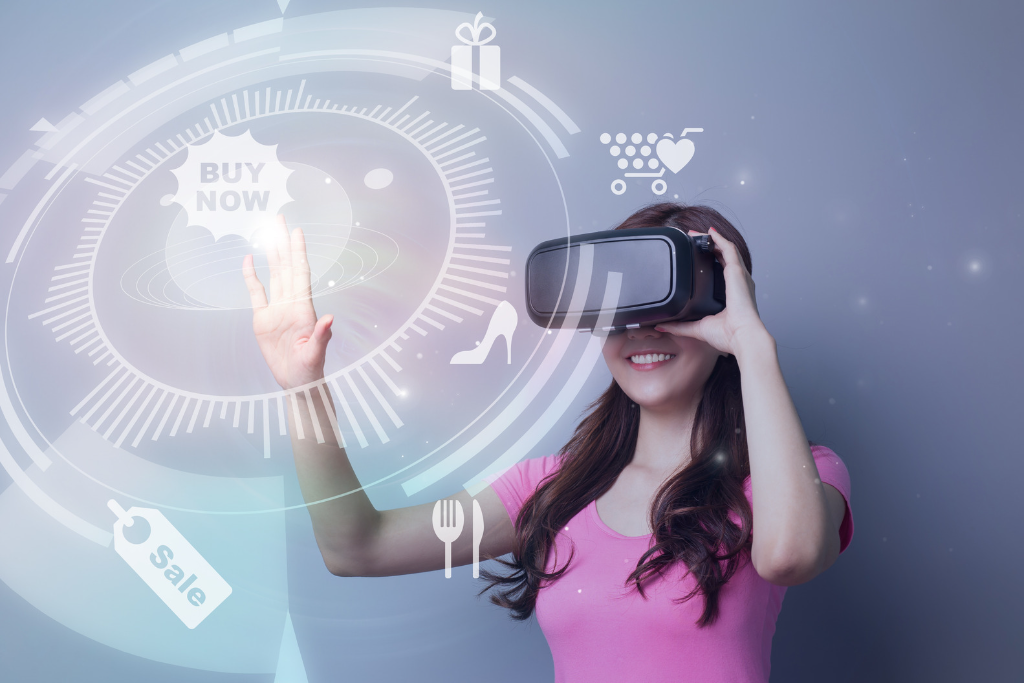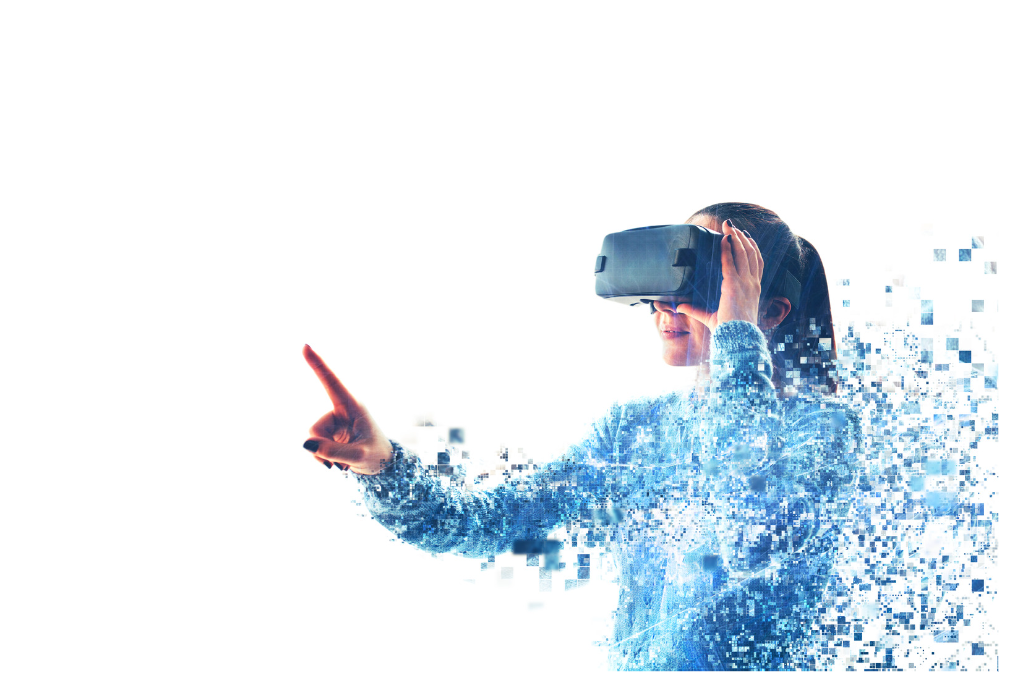Augmented Reality (AR) and Virtual Reality (VR) have emerged as groundbreaking technologies that are reshaping the e-commerce landscape. With their ability to create immersive and interactive experiences, AR and VR are revolutionizing product visualization and customer engagement in online shopping. In this article, we will explore the incredible potential of AR and VR in e-commerce, examining how these technologies enhance product visualization, improve customer engagement, and ultimately drive sales.
Virtual reality and augmented reality will revolutionize how we work, learn, and play, creating a new dimension of computing.
Satya Nadella
One of the critical advantages of AR and VR in e-commerce is their ability to bridge the gap between online and offline shopping experiences. Through AR, customers can visualize products in their own environments, virtually placing furniture in their living rooms or trying on virtual clothing. This enables them to make more informed purchase decisions, boosting their confidence and reducing the likelihood of returns. Conversely, VR offers fully immersive experiences, allowing customers to virtually explore a virtual store, interact with products, and even simulate real-life scenarios. By offering these dynamic and engaging experiences, AR and VR help overcome the limitations of traditional online shopping and create memorable interactions with products.

In addition to enhancing product visualization, AR and VR play a pivotal role in customer engagement. These technologies provide an interactive and personalized shopping experience that captivates customers and keeps them actively involved in purchasing. With AR, customers can customize products, change colors, and see real-time modifications, fostering a sense of ownership and involvement. VR takes customer engagement to new heights by immersing users in virtual environments where they can interact with products, receive personalized recommendations, and even participate in virtual events. By creating these unique and memorable experiences, AR and VR leave a lasting impression on customers, increasing brand loyalty and driving repeat purchases.
Implementing AR and VR in e-commerce does come with its challenges and considerations. Technological requirements, such as device compatibility and processing power, must be taken into account to ensure a seamless user experience. User interface design and intuitive controls are crucial for enabling customers to navigate and interact with virtual environments effortlessly. Furthermore, businesses must consider the cost implications of implementing AR and VR solutions, including development, content creation, and maintenance expenses. However, as these technologies become more accessible and mature, their benefits to e-commerce increasingly outweigh the challenges.

Several industries have already embraced AR and VR in e-commerce with remarkable success. The furniture industry, for example, has witnessed a surge in customer engagement and sales through AR-powered visualization tools that allow customers to see how furniture pieces fit into their homes. The fashion industry is leveraging AR to offer virtual fitting rooms, enabling customers to try on clothes virtually and ensuring a perfect fit. Similarly, the automotive industry is utilizing VR to provide virtual test drives and interactive showroom experiences. These examples demonstrate the vast potential of AR and VR in transforming industries and redefining the way customers shop online.
E-commerce has witnessed significant advancements in recent years, with the integration of Virtual Reality (VR) and Augmented Reality (AR) technologies. These immersive technologies have revolutionized the way customers interact with products and have profoundly impacted the outcomes of online shopping experiences.
Virtual Reality (VR) is a technology that creates a simulated digital environment that users can interact with using specialized VR headsets. VR offers a unique and realistic shopping experience by immersing users in a completely virtual world. Customers can explore virtual showrooms, visualize products in 3D, and even interact with them in a lifelike manner. This level of immersion enhances product engagement and allows customers to make more informed purchase decisions. VR technology also enables businesses to showcase their products in an innovative and memorable way, setting themselves apart from competitors.
Virtual reality and augmented reality will be the next major computing platform.
Tim Cook
On the other hand, Augmented Reality (AR) overlays digital content onto the real-world environment, typically through the use of smartphones or AR-enabled devices. AR technology has gained popularity due to its accessibility and convenience. Customers can use their devices to overlay virtual furniture in their living room, try on virtual clothing and accessories, or even see how a particular shade of lipstick would look on their faces. By providing seamless integration between the digital and physical worlds, AR enhances product visualization and allows customers to experience products in their own environment. This level of personalization and interactivity drives customer engagement and reduces the uncertainty associated with online purchases.
The outcomes of integrating VR and AR technologies in e-commerce have been significant. Firstly, these technologies enhance customer satisfaction by providing a more immersive and engaging shopping experience. Customers can interact with products in a virtual environment, leading to a deeper understanding of their features, functionality, and design. This increased engagement results in higher customer confidence and reduces the likelihood of returns, ultimately driving customer loyalty and repeat purchases.
Secondly, VR and AR technologies address the challenges of online shopping, such as the inability to interact with products physically. By allowing customers to visualize and experience products in a realistic way, these technologies bridge the gap between the online and offline shopping experience. Customers can make more informed purchase decisions, leading to increased conversion rates and higher average order values.
Lastly, VR and AR technologies provide businesses with a competitive advantage. By embracing these technologies, companies can differentiate themselves in the market and create a unique brand image. Businesses that leverage VR and AR are seen as innovative and forward-thinking, attracting tech-savvy customers who seek immersive and interactive shopping experiences. This can lead to increased brand awareness, customer acquisition, and market share.

In conclusion, AR and VR are revolutionizing e-commerce by enhancing product visualization and customer engagement. These technologies bring products to life, enabling customers to visualize and interact with them in previously unimaginable ways. By bridging the gap between online and offline shopping experiences, AR and VR empower customers to make more informed purchase decisions and foster a more profound sense of connection with brands. As businesses continue to harness the power of AR and VR, we can expect to see even more immersive and engaging e-commerce experiences that redefine the future of online shopping.


